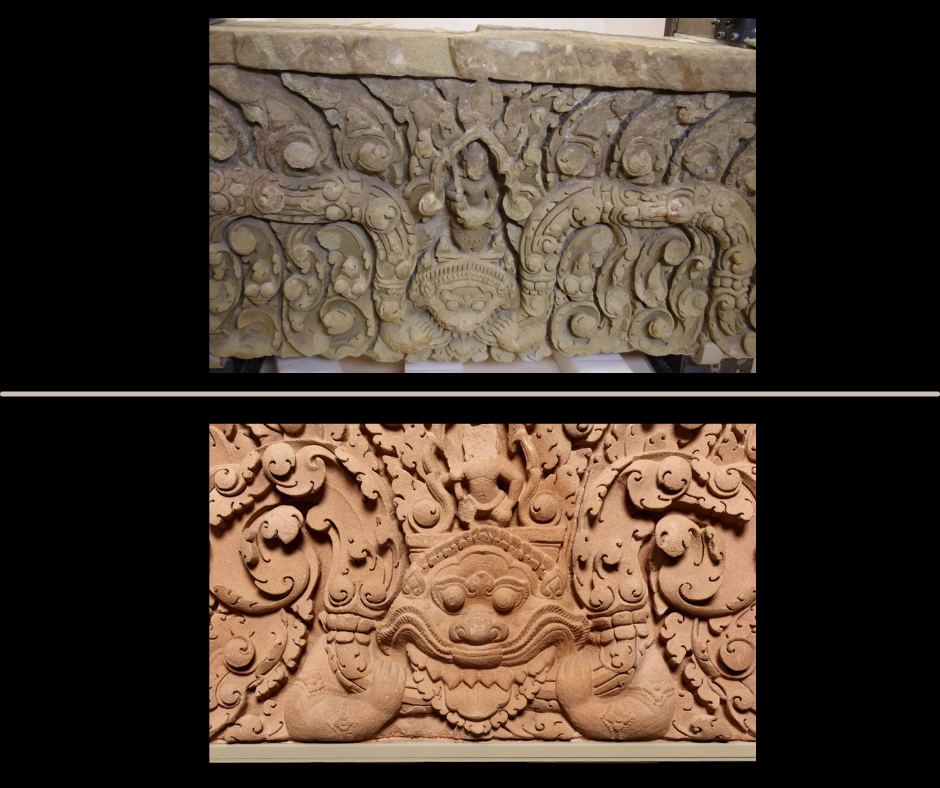Exploring a New Way to Find Smuggled Artifacts: K-9 Artifact Finders
Imagine a new way to catch antiquities traffickers using specially trained working dogs.
CHL suggested the idea in a blog post last year. Now Red Arch is on its way toward making that idea into a reality.
The K-9 Artifact Finders program is spearheaded by Red Arch Cultural Heritage Law & Policy Research, a 501(c)(3) nonprofit whose purpose is to apply first-class research and professional judgment to cultural heritage law and policy problems.
The research project’s goal is to explore how dogs can be trained to find cultural artifacts smuggled in shipping containers, cargo crates, mailed packages, luggage, and more.
Red Arch Research will partner with the Penn Vet Working Dog Center and the Penn Museum, relying on their years of experience and know-how.
To get the project going, Red Arch has launched a GoFundMe page, enlisting support for this important and innovative research.
Finding common target scents linked to looted antiquities–which working dogs would be able to sniff out–would help build a new tool for customs officers that could be deployed to nab cultural heritage traffickers at airports, cargo facilities, and other ports of entry.
The need for detector dogs to combat antiquities trafficking is more urgent than ever. The U.N. Security Council unanimously passed Resolution 2347 in March, supported by the United States, explaining how terrorist groups are generating income from “the looting and smuggling of cultural property from archaeological sites, museums, libraries, archives, and other sites,” and that these crimes against culture are “being used to support their recruitment efforts and to strengthen their operational capability to organize and carry out terrorist attacks ….”
The K-9 Artifact Finders project can help combat this top-priority problem.
The K-9 Artifact Finders project grew out of Red Arch’s investigation into imports into the United States of cultural objects from the Middle East and North Africa. Published by CHL and presented at the Culture Under Threat conference in Cairo, the research sparked troubling questions.
Why did the declared value of U.S. imports of “antiques” from Syria climb 133% between 2012 and 2013 during a time of war?
Why did the declared value of U.S. imports of “antiques” from Iraq skyrocket 1302% between 2009 and 2013, from $322,564 to $4,523,126, during a period of violent unrest?
Were these “antiques” actually looted and smuggled archaeological artifacts?
Red Arch wanted answers, but it was clear that customs officers needed to spot smuggled archaeological objects better. So the nonprofit research center asked whether working dogs could be trained to find smuggled artifacts, and the K-9 Artifact Finders program was developed in order to find the answer.
The kind of canine training that will be undertaken is mostly unprecedented. To prevent potential cross contamination of odors, the primary study, designed by Penn Vet, will focus on the Fertile Crescent region in modern-day Iraq. This area is historically rich, making it a prime target for cultural heritage looters.
Phase I of the project will have four dogs recruited from the Penn Vet Working Dog Center’s training program. Naturally, the dogs will be treated humanely and with care. There will be initial scent imprinting of up to three types of freshly excavated artifacts—lawfully excavated, properly documented, and legally imported with the help of archaeologists, including from the Penn Museum.
Once imprinted, the dogs will learn odor discrimination. The tests will be double-blind, meaning that the researcher, data collector, and trainer will not know the treatment of each specific sample presented to the dog.
If the results prove successful, we will know that working dogs can partner with authorities to help stop antiquities smuggling. That would mark a big step forward in the fight against cultural heritage trafficking.
Learn more at www.redarchresearch.org.
Those who helped design the K-9 Artifact Finders program include the Board of Directors of Red Arch and the following experts:
Dr. Michael Danti, Principal Investigator and Academic Director of ASOR Cultural Heritage Initiatives and a Penn Museum Consulting Scholar.
Domenic DiGiovanni, Customs and Border Protection Officer (Ret.) at U.S. Department of Homeland Security.
Dr. David “Lou” Ferland, Executive Director of The United States Police Canine Association and retired police chief.
Peter Herdrich, Chief Executive Officer at Cultural Capital Group, LLC.
Dr. Cynthia M. Otto, Executive Director of the Penn Vet Working Dog Center.
Text and original photos copyrighted 2010-2017 by Cultural Heritage Lawyer, a blog commenting on matters of cultural property law, art law, cultural heritage policy, antiquities trafficking, museum risk management, and archaeology. Blog url: culturalheritagelawyer.blogspot.com. Any unauthorized reproduction or retransmission without the express written consent of CHL is strictly prohibited.




